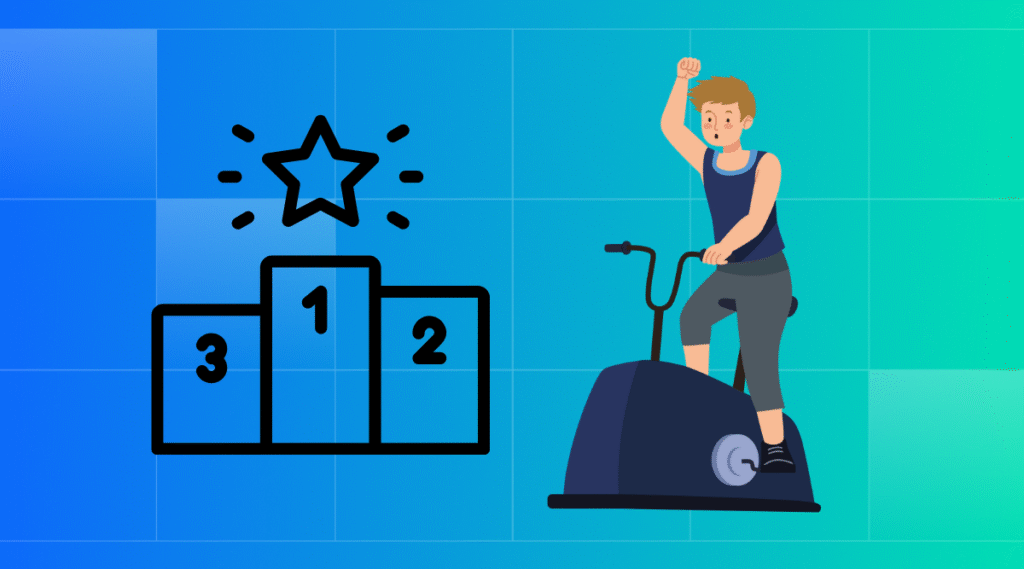Gamification Techniques for Performance are becoming increasingly popular in today’s workplace as companies seek to boost motivation and engagement. Just as Peloton uses gamification to enhance exercise experiences, organizations can apply these techniques to improve employee performance and satisfaction. By integrating game-like elements into daily tasks, businesses can create a more engaging and rewarding environment that drives productivity and success.
The mind-body connection has long been recognized as integral to reaching our goals. When our physical actions are aligned with our thoughts and/or feelings, desired results are more likely to follow, and faster than if we are conflicted or ambivalent. The question for many of us is, how do we create an environment that best supports that alignment?
Peloton’s Approach to Gamification in Exercise
One company that excels at this is Peloton, with its top-of-the-line exercise bikes and experiences such as Scenic Rides, along with thousands of live and virtual classes. Now the company has taken immersion to the next level with Lanebreak, a platform that allows readers to enter another world – that of a video game in which the route is set to the music and difficulty level of their choice. Steering a wheel-shaped avatar, they encounter along the way various challenges they must overcome. At the end of the ride they can see their score and their rank among their friends.
The Evolution and Benefits of Gamification
Peloton is capitalizing on the proven benefits of gamification ‒ or adding game-like aspects to real-life situations. While to some this may seem like a novel idea, we have actually been incorporating gamification, in one form or another, into our lives for decades. It began with the appearance of the first emoji in Japan back in 1999, which was devised as a means of achieving nuanced communication in a world that was increasingly relying on emails rather than phone calls or face-to-face conversations. Over the years they have evolved from the smiley face to capture the full range of emotions, and to varying degrees – amusement to belly laughs, annoyance to rage, embarrassment, stress, puzzlement, and so on. Oftentimes, they are used to convey a message without actually saying it – like a sort of shorthand between communicators. Some companies even include emojis in the subject line of their blast emails so they stand out as we scroll through the inbox. Moreover, emojis are just one element of the gamification present in nearly every digital interaction we have, from scoring points for shopping on a particular site or watching animated characters celebrate with us when we learn something new in a virtual class.
How Gamification Keeps Users Engaged and Motivated
Peloton is utilizing this concept to keep exercisers motivated, not just to complete their present workout but to look forward to the next one. It doesn’t matter if you are trying to get into shape, maintaining your fitness level, or taking it to the next level – you know it is not a sprint, but a marathon. There are moments in each session when you’re flying high and those when you have to draw on every ounce of mental and physical stamina in order to make it to the end. When you do, you’re on a high, eager to get back to it the next day and more likely to follow up with other healthy habits. When you don’t, you must learn to redefine and channel that “failure.” Over time, you develop new ways of tapping into that strength in the moment while keeping your eyes on your goal weight, number of bench presses, et cetera.
Applying the Principles of Gamification to Work
This principle is applicable, not just to your workouts, but your work as well. As Dwayne Johnson has said, “Training for me is a metaphor for life, period. The dedication, the determination, the desire, the work ethic, the great successes and the great failures – I take that into life.” Following “The Rock’s” line of thinking, you might look at each day as a workout session, with similar peaks and valleys. When you complete a project, sign a new client, or reach some other important milestone, you get that rush of confidence and purpose; when a deal goes sideways or you’re distracted by life stuff, you feel deflated and may even wonder why you got into that line of work in the first place. Somehow, you have to get yourself into the mental space to start over again the next morning. You also must be able to focus on the big picture – where you want to be in six months, a year, and so on – and take appropriate actions to get you there.
Creating a Balanced Approach with Gamification
In both cases, you have the perfect environment for gamification. It provides reinforcement of a job well done and empathy and encouragement when you fall short. Just as important, it brings a sense of lightheartedness and fun to tasks that feel like chores but are necessary stepping-stones toward our goals. Finally, it promotes both collaboration and healthy competition with others, as well as a more balanced way of dealing with our own successes and disappointments.
The Deeper Impact of Gamification on Culture and Consciousness
Clearly, gamification goes much deeper than smiling faces on a device. It is both a vehicle for, and indicative of, a major shift in our culture and consciousness – one that allows us to tap into a joyful (and perhaps childlike) aspect of ourselves while tackling life’s challenges with greater efficiency.
